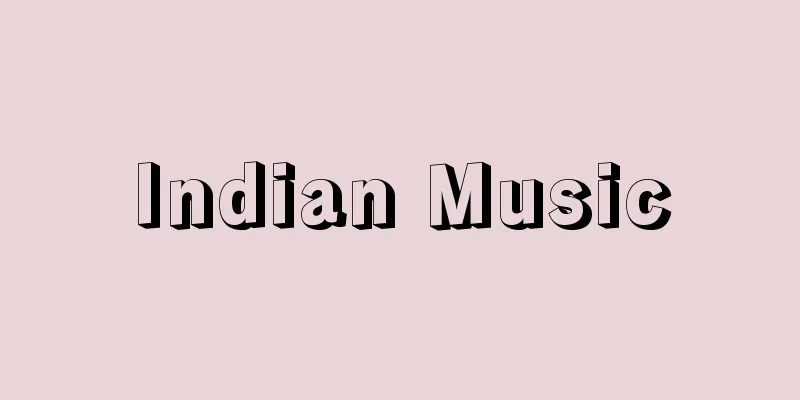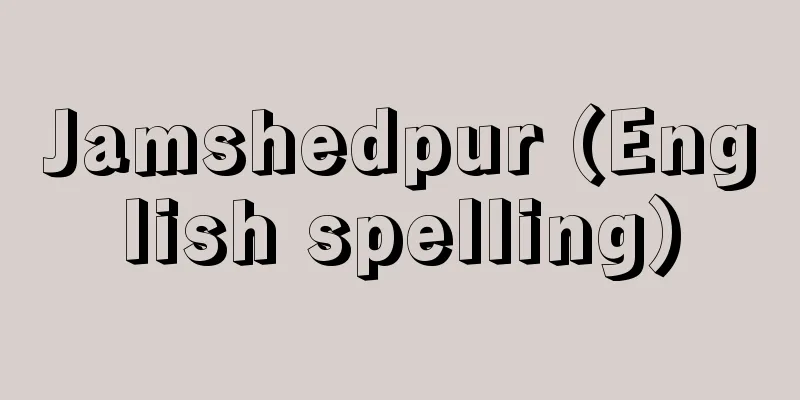Indian Music

|
The Indian peninsula, which has been the stage for constant contact and fusion with different ethnic groups and cultures since ancient times, including the invasion of the Aryans, has a vast area comparable to the whole of Europe. With its diverse natural conditions and ethnic composition, it has formed a variety of cultural domains, including language, religion, and politics, which differ from region to region. The same can be said about musical culture, but in terms of art music alone, it can be broadly divided into the Hindustani style, which is centered in the northern part of India, and the Karnataka style, which is centered in the southern part. Both styles share a common foundation, just like other Indian cultures. This is Indian philosophy based on the ancient Upanishad philosophy, which holds that the universal principle of Brahman and the individual principle of Atman are united, and that one should be liberated from all karma. Accordingly, music has been closely related to various value systems such as beauty and religion, as well as natural phenomena, and has produced highly refined styles of art music. On the other hand, the basic principles of musical formation permeate not only art music but also folk music and dance, and have given rise to a wide variety of lively musical scenes that span the entirety of India, such as the wandering arts of the Bauls, which are based on folk religion, and the votive dance of the Chhau, which is linked to the agricultural calendar. The whole of this folk music and art music can be called Indian music. [Makoto Nakagawa] From ancient times to the Islamic invasionThe history of Indian music can be traced through music books, scriptures, sculptures, pictorial images, and so on. Drums and bow harps have already been found in artifacts excavated from Mohenjo Daro and Harappa, ruins of the Indus civilization, but the actual music is unknown. The four Vedas, compiled by the Aryans who invaded from West Asia around 1500 BC bringing sacred doctrines and rituals, contain Vedic hymns, which are the oldest traditions of vocal music in the world and each had its own unique recitation style at the time. For example, the Rig Veda has a strict recitation style with three types of high and low accents, while the Sama Veda uses many ornaments, is free from accents, has a wide range, and has a complex melody line. Vedic hymns are still handed down and used in Hindu temples today, but some use seven notes, and not all of them are necessarily faithful to the original Vedic hymns. Ancient Indian culture, represented by Brahmanism and the Vedas, culminated in the Ramayana and the Mahabharata, but these Hindu epics are not only performed within India, for example in the dance-drama Kathakali handed down in the southern state of Kerala, but have also had a widespread influence on the culture of Southeast Asia as a whole, as can be seen in the Indonesian shadow puppet theater Wayang Kulit. Around the same time, in the 5th century BCE, the new free ideology of Buddhism and Jainism, which opposed the old powers, spread throughout India, and music also began to take on a Buddhist color. During the reign of King Ashoka in the 3rd century BCE, Hinayana Buddhism was practiced, and music and dance were shunned by precepts, but as Mahayana Buddhism developed in northern India after Christ, music and dance were greatly encouraged in ceremonies as part of offerings, and gradually spread throughout the court and the town, and descriptions of music in the Mahayana scriptures became more abundant. The main instruments found in the scriptures include the veena, a stringed instrument, the bansi, an air-sounding instrument, and the dundubi, a membranous instrument. During the Gupta Dynasty in the 4th century, Brahmanism was revived and eventually came to have a strong influence as Hinduism. Buddhism spread beyond the Indian peninsula, and Buddhist music, although modified, reached Japan in the form of chanting. It was during this period that Bharata's Natya Shastra, the oldest and most important theoretical book on Indian music, appeared. The original forms of raga (theory of scales and modes) and tala (theory of beat cycles and rhythm), which are central to Indian music theory today, were established around the 13th century, but the theory of jati, the precursor to raga, was already found in this book, and it had a great influence on later generations, including tala. According to this, the scales Sa Grama and Ma Grama are derived based on 22 small intervals, Shruti, which divide the octave unequal. The seven notes that make up this scale are called Subala, and are called Sa, Ri, Ga, Ma, Pa, Dha, Ni from the lowest note. This corresponds to the scale names in Western music (Do, Re, Mi, Fa, etc.). Then, from one Grama, seven scales are created with one note shifted from the starting note, and a total of 14 Moorcanas are created by ascending and descending, and the two Gramas, Sa and Ma, make a total of 28 Moorcanas. Furthermore, a scale of 5 to 6 notes, Tana, is added, and from these Moorcanas and Tana, 18 Jati, which are the basic modes used in actual music, are determined. This theory of modes was passed down to works such as Sangita Ratnakara by Shalunga Deva in the 13th century, and developed into Raga. Tala is a theory that defines periodic metrical rhythm, and divides one whole cycle into several beat groups. For example, the modern North Indian tala or dhamar has a cycle of 5, 2, 3, and 4 beats, totaling 14 beats. In order to sense this tala, the performer and audience keep the beat using their hands, fingers, knees, toes, etc. during the performance. In addition, in the course of theoretical development after the Natya Shastra, the bow-shaped veena changed into the prototype of today's bell-headed veena. [Makoto Nakagawa] The Establishment and Development of North-South Classical MusicWhen the Islamic dynasty was established in Delhi in the 13th century, many West Asian musicians, instruments, and theories were imported to North India, and by the 15th and 16th centuries, a Hindustani musical culture with strong Islamic elements had formed. Meanwhile, in South India, the Carnatic musical culture, which maintained the original Hindu traditions of India, flourished, and from then on, Indian musical traditions were divided into two major trends that remain to this day. In Hindustani music culture (North India), Islamic instruments such as the tambour, setar, rabab, and surnai were introduced and combined with ancient Indian instruments to create the plucked stringed instrument tambura (for sustained sounds), sitar (for melody), and bowed stringed instrument sarangi. The tabla baya, a membranous instrument played mainly with the fingers on two drums of different sizes, was also strongly influenced by Islam in its playing technique and rhythm theory, and developed rapidly during this period. In terms of music theory, the numerous ragas (called raags in the north) and talas (also called taals) that existed until now have been consolidated and organized into ten and a dozen types, respectively. In the Karnataka music culture (South India), the Veena, a plucked stringed instrument with 12 frets per octave, was perfected in the early 17th century. The rhythm is provided by the Mridanga, a double-sided percussion membrane instrument. Music theory follows the Melakartha mode theory established by Vekaamakhi in the 17th century. This abolishes the 22 Shrutis and divides an octave into 12 semitones, from which 72 ragas are defined. There are also 35 talas. From the second half of the 17th century, European traders entered South India, and the violin and clarinet that were introduced with them became established in traditional music. The harmonium, a small organ for drones (sustained bass sounds), also began to be used in folk music. Later, in the mid-19th century, the whole of India became a British colony, and the status of musicians became unstable and artistic activity declined. However, after the establishment of the Republic of India in 1947, despite social upheaval such as the independence of Pakistan and Ceylon (Sri Lanka), the music and dance are regaining their vitality thanks to the government's policy of protecting them. [Makoto Nakagawa] Characteristics of Indian MusicFrom a theoretical point of view, Indian music, which has such a history, is characterized by its strict rules, in that ragas are linked not only to music but also to other arts, religion, and various concepts of social customs, and that they precisely define specific seasons, dates, and times, and the moods that accompany them, and are organically linked to talas, and furthermore, they have various musical forms. However, from the point of view of performance customs, its greatest characteristic is improvisation. Indian music combines these seemingly heterogeneous elements, and musicians, guided by ragas and talas, challenge the limits of melody and rhythmic possibilities, while the audience watches with bated breath. And they derive deep spiritual satisfaction from encountering creative performances. In this way, Indian music is being created every day by performers and audiences. [Makoto Nakagawa] Late 18th century Wood, gourd, steel, brass, gold leaf, papier-mâché Length: 121.5 cm Collection of the Metropolitan Museum of India Venus North Indian plucked rabab. Circa 1885. Wood. Total length 114.3 cm . Collection of the Metropolitan Museum of India. Rabaab Mid-19th century, wood, length 135.9 cm, owned by the Metropolitan Museum of India sitar 19th century Wood, metal, parchment, ivory Length: 62.8 cm Collection of the Metropolitan Museum of India Sarangi Source: Shogakukan Encyclopedia Nipponica About Encyclopedia Nipponica Information | Legend |
|
古代よりアーリア人の侵入をはじめとして、異民族、異文化との絶えざる接触、融合の舞台となったインド半島は、ヨーロッパ全域に匹敵する広大な面積をもち、この多様な自然条件と民族構成のもとで、地域によってさまざまに異なった言語、宗教、政治など多彩な文化の諸領域を形成してきた。音楽文化に関しても同様であるが、芸術音楽に限れば、今日インド北部中心のヒンドスターニー様式と、南部中心のカルナータカ様式に大別することができる。両者ともインドの他の文化と同じく、共通の基盤をもっている。それは、宇宙原理たるブラフマン(梵(ぼん))と個人原理たるアートマン(我)が一致し、あらゆるカルマ(業)から解脱することを理想とする古代ウパニシャッド哲学を基底とするインド哲学である。それに従い、音楽は美や宗教などさまざまな価値体系や自然現象と密接に関連しながら、高度に洗練された芸術音楽の様式を生み出してきた。一方その基本的な音楽の形成原理は、芸術音楽のみならず民俗音楽、舞踊にも浸透しており、民間宗教に基づくバウルの放浪芸や、農耕暦と結び付いたチョウの奉納舞踊など、インド全土にわたる空間的時間的広がりをもって、多種多様な生き生きとした音楽的場面を現出させているのである。これら民俗音楽と芸術音楽を含めた総体をインド音楽ということができよう。 [中川 真] 古代からイスラム侵入までインド音楽の歴史は音楽書、聖典、彫刻、絵画的図像などからその流れをたどることができる。すでにインダス文明の遺跡であるモヘンジョ・ダーロやハラッパーからの出土品に、太鼓や弓形ハープが認められるが、その音楽の実態は不明である。紀元前1500年ごろに西アジアから聖なる教義と祭式を携えて侵入してきたアーリア人によってまとめられた四つのベーダにはベーダ賛歌があり、現存する声楽のなかでは世界最古の伝統をもち、当時それぞれ独自の朗唱形式をもっていた。たとえば『リグ・ベーダ』では3種の高低アクセントをもつ厳格な朗唱法を、『サーマ・ベーダ』では反対に装飾音を多用し、アクセントから自由で音域が広く旋律線の複雑な朗唱法をもっていたという。今日でもヒンドゥー寺院内ではベーダ賛歌が伝承され実際に用いられているが、なかには七音を使用するものもみられ、かならずしもすべてが当初のベーダ賛歌を忠実に伝えるものではない。 バラモン教とベーダに代表される古代インド文化は『ラーマーヤナ』と『マハーバーラタ』に結実するが、このヒンドゥー叙事詩は、たとえば南部ケララ州に伝承されている舞踊劇カタカリのようにインド国内で演じられるだけではなく、インドネシアの影絵芝居ワヤン・クリにみられるように、広く東南アジアの文化全体に影響を与えることになった。 それと前後して前5世紀ごろには、旧勢力に対抗する新興自由思想、仏教やジャイナ教がインド全土に広まり、音楽も仏教的色彩を帯びるようになった。前3世紀のアショカ王の時代は小乗仏教で、戒律により音楽、舞踊は遠ざけられていたが、紀元後に北インドを中心に大乗仏教が発展するに及んで、音楽と舞踊は供養の一部として儀式にて大いに奨励されるなど、宮廷に市井に徐々に満ち、大乗教典内の音楽に関する描写も豊かになってゆく。教典にみられる楽器としておもなものには、弦鳴楽器ビーナ、気鳴楽器バンシー、膜鳴楽器ドゥンドゥビなどがある。 4世紀のグプタ朝時代にはバラモン教が再興され、やがてヒンドゥー教として強い勢力をもつに至る。仏教はインド半島より外部へ出、仏教音楽も変形を受けながら声明(しょうみょう)として日本にまで伝わっている。この時期にインド音楽にとって最古かつきわめて重要な理論書であるバラタの『ナーティヤ・シャーストラ』が現れた。今日のインドの音楽理論の中心であるラーガ(音階・旋法の理論)とターラ(拍節周期・リズムの理論)は13世紀ごろにその原形ができあがったが、すでに同書にラーガの前身であるジャーティの理論がみいだされるなど、ターラも含めて後世に大きな影響を与えた。 それによると、オクターブを不均等に分けた22の微小音程シュルティを基礎に、サ・グラーマとマ・グラーマという音階を導き出す。この音階を構成する7音をスバラといい、低い音からsa, ri, ga, ma, pa, dha, niとよぶ。これは西洋音楽の階名(ド・レ・ミ・ファ…)に相当する。そして一つのグラーマから開始音の一つずつずれた音階を7種、上行と下行とで計14種のムールチャナーをつくり、サとマの2グラーマで計28ムールチャナーができあがる。さらに5~6音の音階ターナを加え、以上のムールチャナー、ターナから実際の音楽に使われる基本的旋法である18種のジャーティを定める。この旋法理論が13世紀のシャールンガ・デーバによる『サンギータ・ラトナーカラ』などに引き継がれて、ラーガへと発展してゆくのである。 ターラは周期性をもつ拍節リズムを規定する理論であり、一つの周期全体をいくつかの拍グループに分割する。たとえば現代北インドのターラ、ダマールは5・2・3・4の計14拍を1周期とする。このターラを感得するために、演奏に際して、演奏者と聴衆は手、指、膝(ひざ)、足指などを使って拍子をとることが行われる。また、楽器の変遷では『ナーティヤ・シャーストラ』以後の理論的展開の過程で、弓形のビーナは今日のふくべ付きのビーナの原形へと姿を変えていった。 [中川 真] 南北古典音楽の成立と展開13世紀にデリーにイスラム王朝ができると、北インドには西アジアの音楽家、楽器、理論などが多く輸入され、15~16世紀までにイスラム的要素を強くもつヒンドスターニー音楽文化が形成された。一方、南インドではインド本来のヒンドゥー伝統を保つカルナータカ音楽文化が栄え、以後インドの音楽伝統は今日に至るまで二大潮流に分かれることになった。 ヒンドスターニー音楽文化(北インド)ではイスラムの楽器タンブール、セタール、ラバーブ、スルナイなどが移入され、インド古来の楽器と結び付いて撥奏(はっそう)弦鳴楽器タンブーラ(持続音用)、シタール(旋律用)、弓奏弦鳴楽器サーランギなどができあがった。また大きさの異なる二つの太鼓を主として指で打奏する膜鳴楽器タブラ・バヤも、その奏法とリズム理論においてイスラムの影響を強く受け、この時期に飛躍的に発展した。音楽理論に関していえば、今日ではそれまで数多く存在したラーガ(北ではラーグとよばれる)とターラ(同じくタール)は、それぞれ10種類、十数種類に統合、整理されている。 カルナータカ音楽文化(南インド)では、17世紀初めにオクターブに12のフレットのついた撥奏弦鳴楽器ビーナが完成した。リズムは両面の打奏膜鳴楽器ムリダンガが受け持つ。音楽理論では17世紀のベンカタマキVekaamakhiによって確立された旋法理論メーラカルタに従っている。これは、22のシュルティを廃して1オクターブを12の半音に等分し、ここから72種のラーガを規定するものである。またターラは35種が定められている。 17世紀後半からはヨーロッパ商人が南インドに進出し、それに伴い伝来したバイオリンやクラリネットが伝統音楽に定着することとなる。またドローン(持続低音)用として小型オルガンであるハルモニウムが民俗音楽に使用され始めた。その後19世紀なかばにインド全土がイギリスの植民地と化し、音楽家の地位も不安定となって芸術活動も衰退したが、1947年のインド共和国成立後は、パキスタンやセイロン(スリランカ)の独立など社会的変動はあったものの、政府の音楽・舞踊の保護政策によって活気を取り戻しつつある。 [中川 真] インド音楽の特質以上のような歴史をもつインド音楽は、理論面からみるならば、ラーガが音楽のみならず他の諸芸術や宗教、社会慣習上の諸概念と結び付き、特定の季節や日時、それに伴う情調を細かく規定するとともにターラとも有機的な連関をもち、さらにはさまざまな音楽形式をも有するという厳格な規則性にその特徴がある。しかしながら演奏慣習という点からみるなら、その最大の特徴は即興演奏にある。この一見異質とも思える要素をあわせもつのがインド音楽であり、音楽家はラーガとターラに導かれて旋律と律動の可能性の極限に挑戦し、聴衆はそのできごとをかたずを飲んで見守る。そして創造的な演奏に出会うことにより深い精神的満足を得るのである。このようにして、インド音楽は演奏家、聴衆によって日々新たにつくりだされてきている。 [中川 真] 18世紀後半 木・ヒョウタン・鋼・真鍮・金箔・張り子 全長121.5cm インドメトロポリタン美術館所蔵"> ビーナ 北インドの撥弦ラバーブ。1885年ころ 木 全長114.3cm インドメトロポリタン美術館所蔵"> ラバーブ 19世紀中ごろ 木 全長135.9cm インドメトロポリタン美術館所蔵"> シタール 19世紀 木・金属・羊皮紙・象牙 全長62.8cm インドメトロポリタン美術館所蔵"> サーランギ 出典 小学館 日本大百科全書(ニッポニカ)日本大百科全書(ニッポニカ)について 情報 | 凡例 |
<<: Indian Studies - Indian Studies (English spelling)
Recommend
Cullinan
According to legend, this was a curse caused by a...
Prothoracic gland
...The prothoracic gland was first described as c...
House of Saxony - Sachsen German
The first dynasty of the medieval German kingdom ...
International Gothic Style - International Gothic
A style of art that arose around 1360/70 to 1420, ...
mace head
…Other stone axes used as weapons or ceremonial g...
Penetrating nematocysts
…Cnidocytes are cell organelles that are containe...
Lyceum (English spelling)
The Lyceum was a cultural improvement movement tha...
Fuso [town] - Fuso
A town in Niwa District, northwest of Aichi Prefec...
Asian mode of production (English: asiatische Produktionsweise) German
A term used by Marx in the "Preface" to...
Chirality - Kiraritii (English spelling) chirality
In molecular or crystal structures, this term is ...
Wiora, W. (English spelling) WioraW
From an artistic point of view, what is required ...
Shomeimon-in
Year of death: 15 August 1257 Year of birth: Joan ...
Gill plate - Chorai
… [Respiratory organs of invertebrates] Invertebr...
Maki Aritsune - Maki Aritsune
Mountaineer. One of the pioneers of modern mountai...
Hurricane - hurricane (English spelling)
A tropical cyclone that develops in the North Atl...









